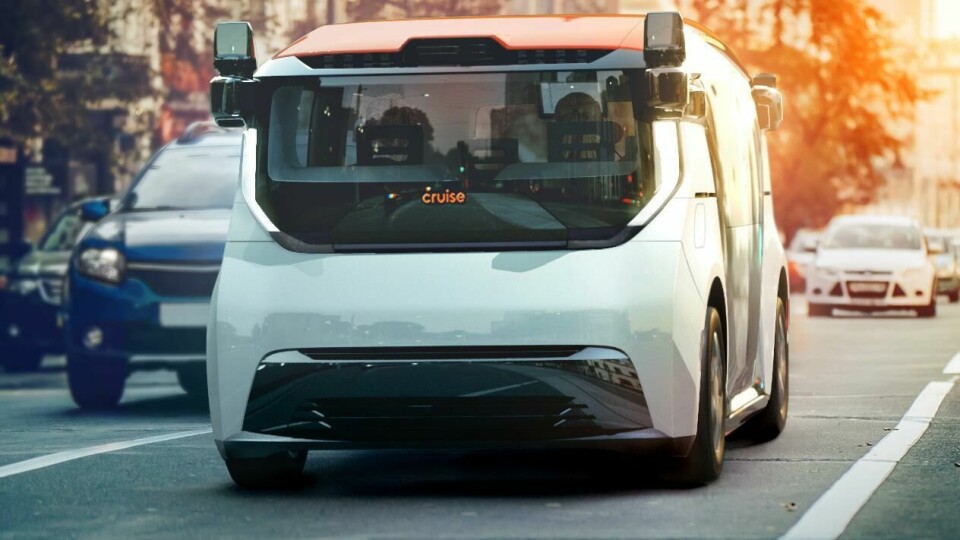
Cruise reveals its “production-ready” Origin autonomous car
Level-5 AV will begin testing in the near future – if the government approves it…
Cruise Automation, a transportation startup with heavy investment from GM and Honda among others, has been seeking an autonomous solution to urban mobility for a few years now. Specially outfitted GM Bolt cars have been seen cruising (no pun intended) around San Francisco for some time, and there was a long-awaited rollout of the working vehicle scheduled for 2019.
That deadline came and went, leaving some wondering if the venture – now valued at some US$19 billion – was just automotive vaporware, as some other automotive startups have proven to be (not naming names, but you know who you are).
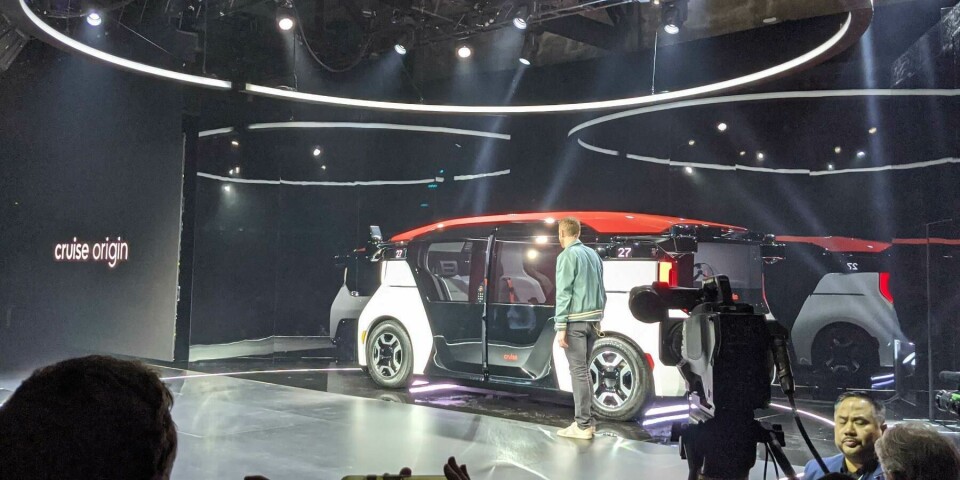
On Tuesday evening however, Cruise went a long way to alleviate fears by introducing its production ready Cruise Origin, a six-seat passenger vehicle that can traverse the city autonomously, eliminating the driver and streamlining the service model for shared transportation.
Cruise CEO Dan Amman has been a sharp critic of the individual car in the city, and San Francisco, with its tight urban pattern, seems the perfect test track for autonomous cars, much to the chagrin of the locals. In an essay published on Medium, Ammon blasted the presence of the individual car, whether driven by a private owner or used by car sharing services such as Uber or Lyft.
Ammon (unsurprisingly) sees Cruise as a better idea and hopes to work in concert with local transit agencies to augment bus and train services in an affordable way.
“We’ve been just as obsessed with making the Origin experience as inexpensive as possible,” Ammann said during his presentation. “Because if we’re really serious about improving life, and our cities, we need huge numbers of people to use the Cruise Origin – and that won’t happen unless we deliver on a very simple proposition: a better experience at a lower price than what you pay to get around today.”
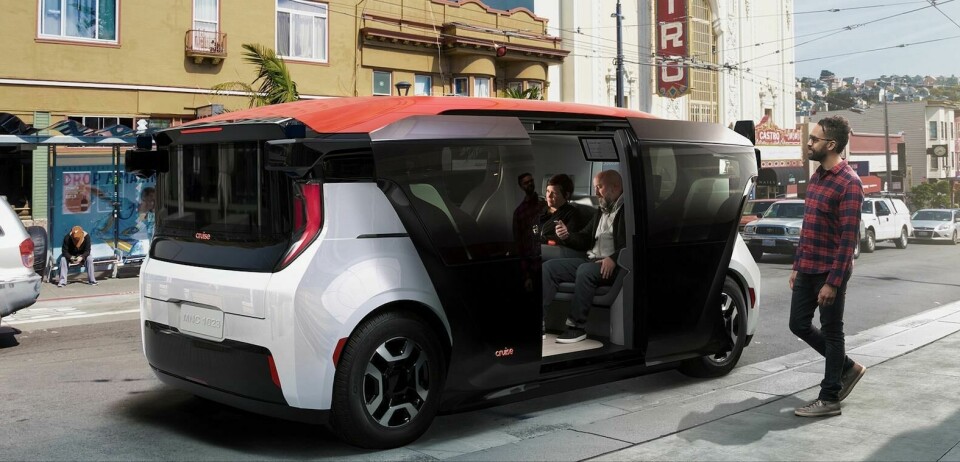
Just what the Cruise Origin actually is remains a matter of debate. The buzz on Twitter this Tuesday evening showed the existential conundrum in which Cruise finds itself. Some called it a car, some called it a bus, others called it a taxi or a shuttle. Certainly, its toaster-like shape lends itself to being called a minibus, but clearly Cruise is meant as a substitute for a taxi or Uber/Lyft car.
This is not just an idle taxonomic speculation, nor is it intended to poke fun at the Cruise Origin’s design. That seems perfectly functional, and well considered. Its styling may lack the kind of flair one might hope for in a private car, but Origin has larger, more urbanistic goals in mind. Still, the pleasant, but ‘neutral’ shape, glazed doors and grey bench seating reinforce the fears that the dawn of the autonomous era will mean the twilight of great car design.
We are more optimistic however, as prototypes like Origin take to the streets, that design and branding will emerge as signifiers of different types of services and customer demographics.

For now, a bit of specifics, which were not much in evidence at the launch. As noted, there are no traditional controls, and no place for a driver. The Origin can seat six occupants, with four being the optimal number. Each seat has individual USB ports with screens above, presumably for trip monitoring and general information. Legroom is plentiful as the seats, facing each other, allow for greater space. The cabin is entered through the sliding glass doors – a plus for cyclists who share the roads and are at constant danger from traditional swinging doors. A keypad at the door allows a secure access to the cabin, and is reminiscent of the GM EV1.
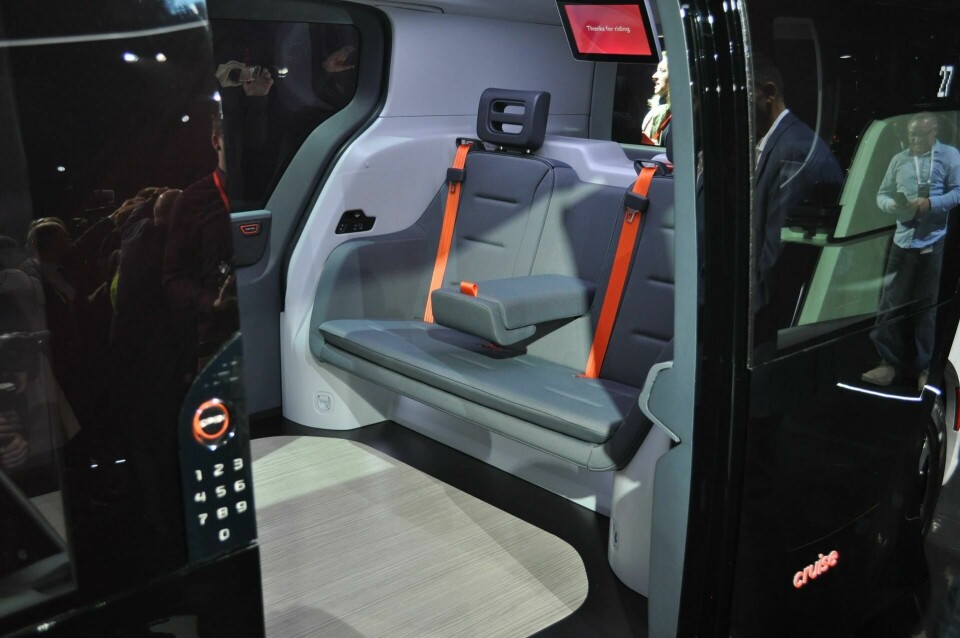
The battery size, range, description of the service and costs were not available at the launch.
Amman claims the Origin can be built for about half the price of an electric SUV. The lifespan of an Origin is predicted to be a million miles. In a small city the size of San Francisco, that is a lot of rides. The manufacturing site was not available either. We do know that this will be a GM product, with some input from Honda, although the exact breakdown of the manufacturing partnership was again, not available.
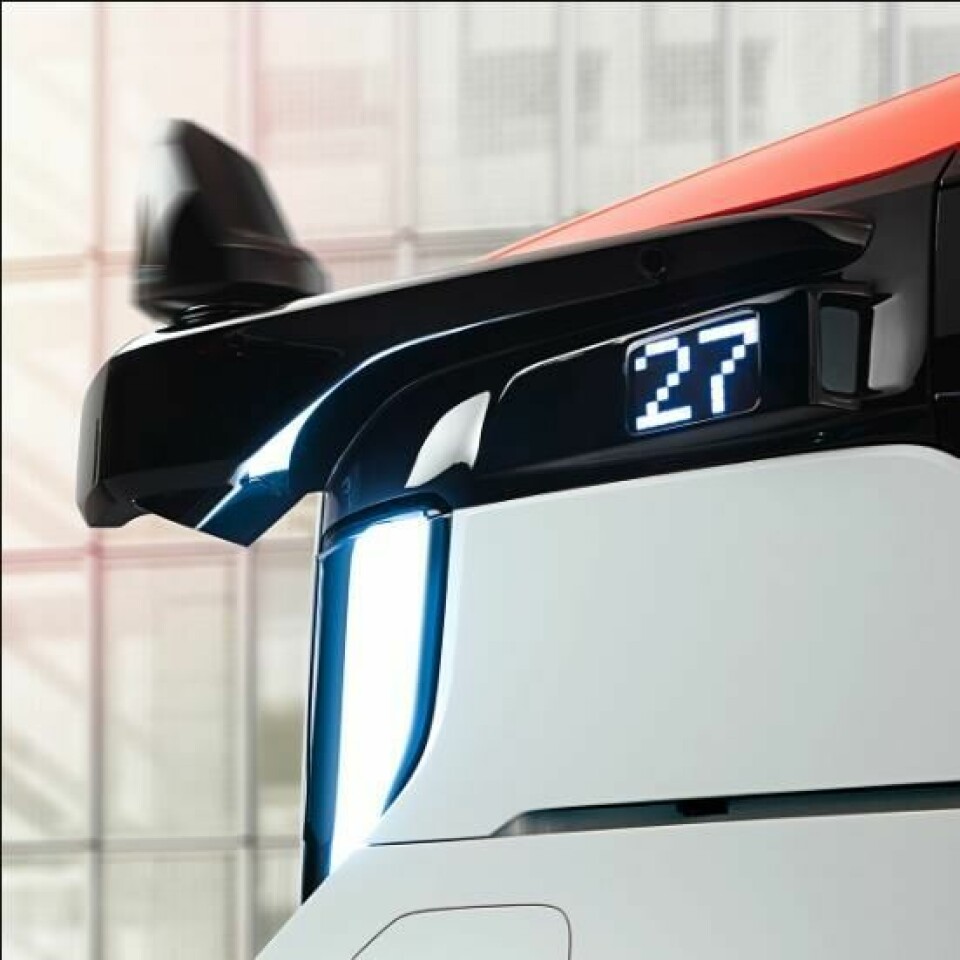
The Cruise Origin will not be a regular of the streets of San Francisco anytime soon, however. The Origin still is not approved by US regulators. It will first be seen at GM facilities and probably some Honda ones as well. When government regulatory hurdles have been cleared, we will then see the Origin in a number of markets, although those have yet to be identified. No doubt local taxi services, as well as Uber and Lyft, will have something to say about that.











